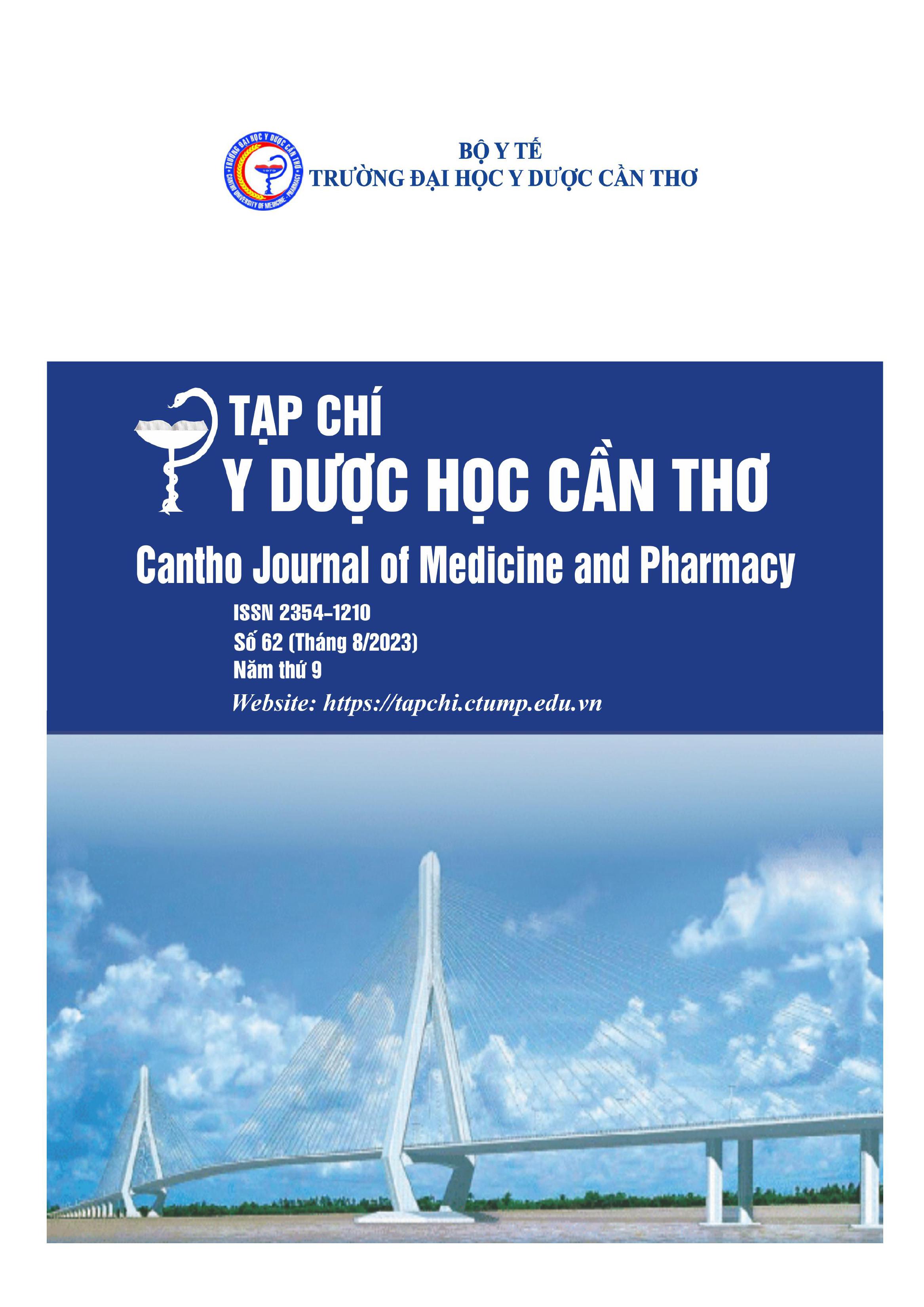CLINICAL, PARACLINICAL CHARACTERISTICS AND TREATMENT RESULTS OF PRETERM NEONATE RESPIRATORY FAILURE BY NASAL CONTINUOUS POSITVE AIRWAY PRESSURE AT CAN THO CHILDREN’S HOSPITAL IN 2022-2023
Main Article Content
Abstract
Background: Nasal Continuous Positive Airway Pressure (NCPAP) is an effective, simple, and safe treatment for acute respiratory failure in neonates, particularly premature infants, which remains the primary cause of mortality in this population. Objectives: To describe the clinical and paraclinical characteristics and evaluate treatment outcomes of respiratory failure in premature infants treated with NCPAP at Can Tho Children's Hospital. Materials and methods: A crosssectional study was carried out of 43 premature infants with respiratory failure treated with NCPAP at Can Tho Children's Hospital from June 2022 to April 2023. Results: Male sex accounted for 51.2%, with an average gestational age of 33.1±2.6 weeks and an average weight of 2061g±567g. Upon admission, 93% showed chest retractions, 60.5% exhibited lethargy and restlessness, and 58.1% had respiratory grunting. The success rate of NCPAP treatment was 76.7%, with a failure rate of 23.3%. Infants with a gestational age <32 weeks and at risk of early-onset neonatal infection had a higher treatment failure rate with NCPAP (p<0.05). Conclusion: It is essential for clinical physicians to establish individualized treatment and care plans for each preterm infant experiencing respiratory failure and receiving NCPAP support, especially for those with a gestational age below 32 weeks and with risk factors for neonatal infections.
Article Details
Keywords
NCPAP, neonates, respiratory failure
References
2. Sweet D.G., Carnielli V., Greisen G., Hallman M., Ozek E., et al. European Consensus Guidelines on the Management of Neonatal Respiratory Distress Syndrome in Preterm Infants – 2019 Update. Neonatology, 2019, 115(4), 432-450, https://doi.org/10.1159%2F000499361.
3. Trần Duy Vũ, Nguyễn Thị Yến, Lê Thị Hồng Hanh. Hiệu quả của thở áp lực dương liên tục qua mũi trong điều trị suy hô hấp cấp ở trẻ em tại Bệnh viện Nhi Trung Ương. Tạp chí Y học Việt Nam, 2021, 506(1), https://doi.org/10.51298/vmj.v506i1.1185.
4. Dargaville P.A., Gerber A., Johansson S., De Paoli A.G., Kamlin C.O., et al. Incidence and outcome of CPAP failure in preterm infants. Pediatrics, 2016, 138(1), 1-10.
5. Ma Thị Hải Yến, Khổng Thị Ngọc Mai. Kết quả điều trị suy hô hấp ở trẻ sơ sinh non tháng bằng thở áp lực dương liên tục qua mũi tại Bệnh viện Trung Ương Thái Nguyên. NU Journal of Science Technology, 2021, 226 (14), 251-257.
6. Bùi Khánh Duy. Nghiên cứu đặc điểm lâm sàng, cận lâm sàng, một số yếu tố liên quan và đánh giá kết quả điều trị bệnh màng trong bằng thông khí nhân tạo ở trẻ sơ sinh non tháng tại Bệnh viện Nhi đồng Cần Thơ năm 2018- 2020. Luận văn bác sĩ nội trú. Trường Đại học Y Dược Cần Thơ. 2020. 39.
7. Võ Thị Xuân Hương. Nghiên cứu đặc điểm lâm sàng, cận lâm sàng và đánh giá kết quả điều trị suy hô hấp cấp ở trẻ sơ sinh non tháng bằng phương pháp thở áp lực dương liên tục qua mũi tại bệnh viện nhi đồng Cần Thơ năm 2016 – 2018. Luận văn chuyên ngành Nhi Khoa. Trường Đại học Y Dược Cần Thơ. 2018. 49-71.
8. Nguyễn Tâm Long, Lê Minh Trác, Lê Trương Tuyết Minh, Tăng Thị Minh Thu, Nguyễn Quỳnh Tú. Suy hô hấp ở trẻ sinh non tại Bệnh viện Phụ sản Trung Ương: Kết quả điều trị và một số yếu tố liên quan. Tạp chí dược lâm sàng 108. 2021. 16(4), 58-64, https://doi.org/10.52389/ydls.v16iDB4.
9. Sahussarungsi S., Techasatid W. Predicts of early nasal continuous positive airway pressure (CPAP) failure and consequences in preterm infants in Thammasat University Hospital. J Med Assoc Thai, 2017, 100, 46-50.
10. Vũ Minh Phúc. Nhi Khoa tập 2. Nhà xuất bản Đại học Quốc gia TP Hồ Chí Minh. 2020. 169-191.
11. Nguyễn Tiến Dũng. Cấp cứu Nhi Khoa đánh giá, phân loại, xử trí và điều trị, Nhà xuất bản Y học Hà Nội.2018. 341-356.


